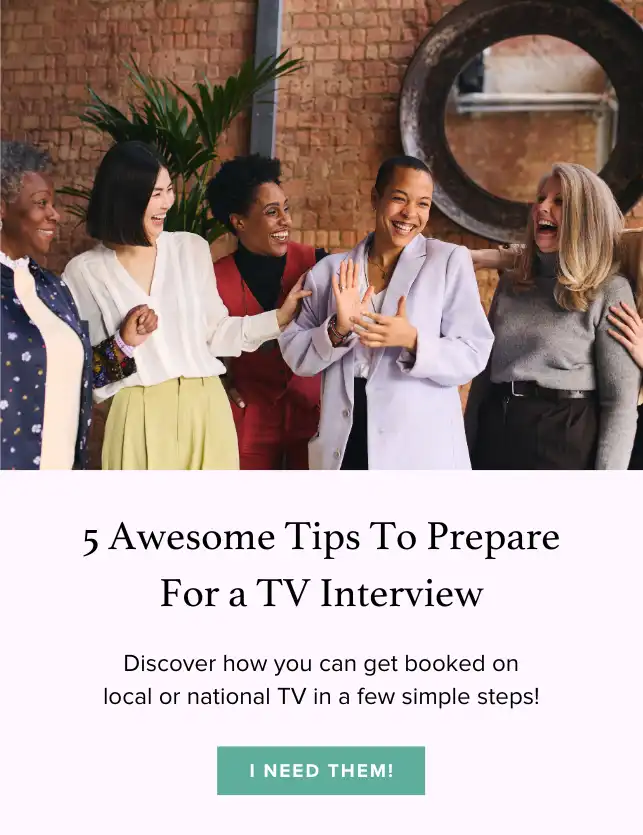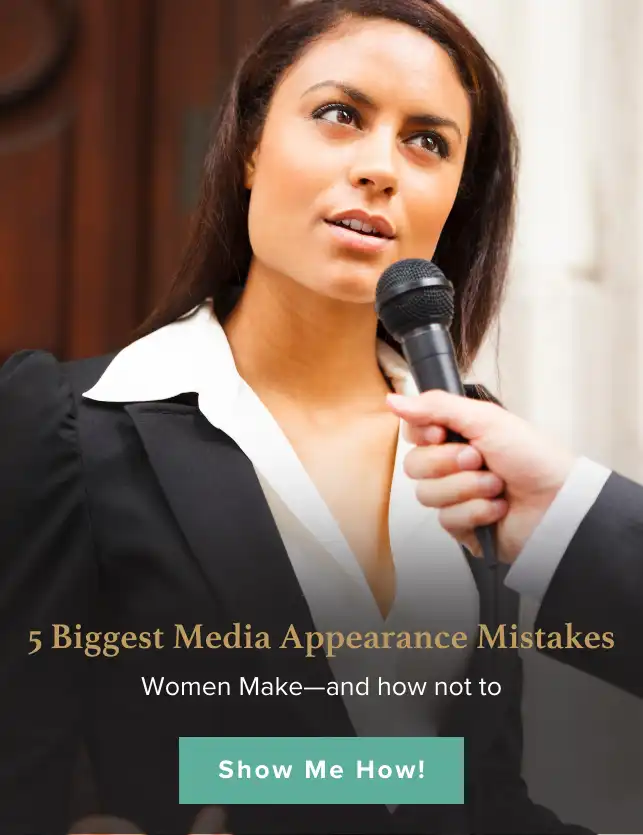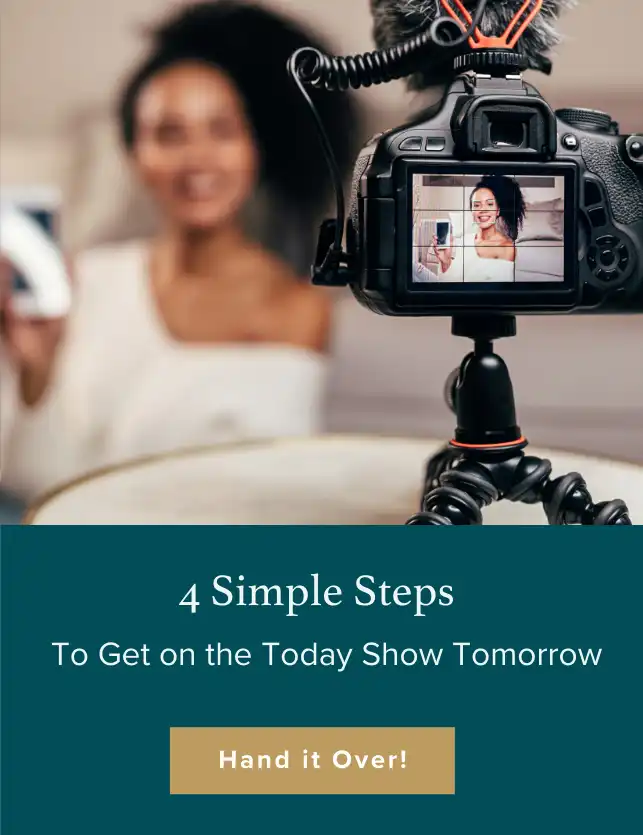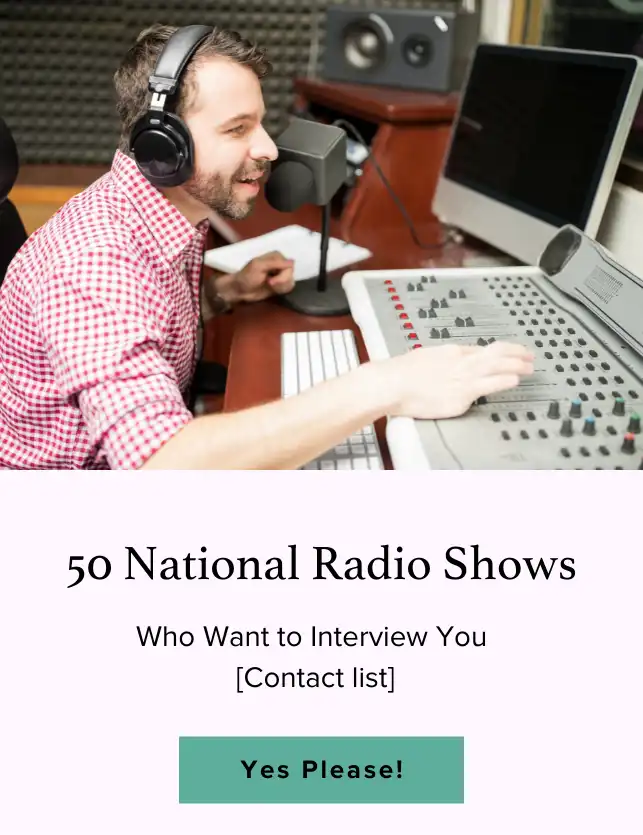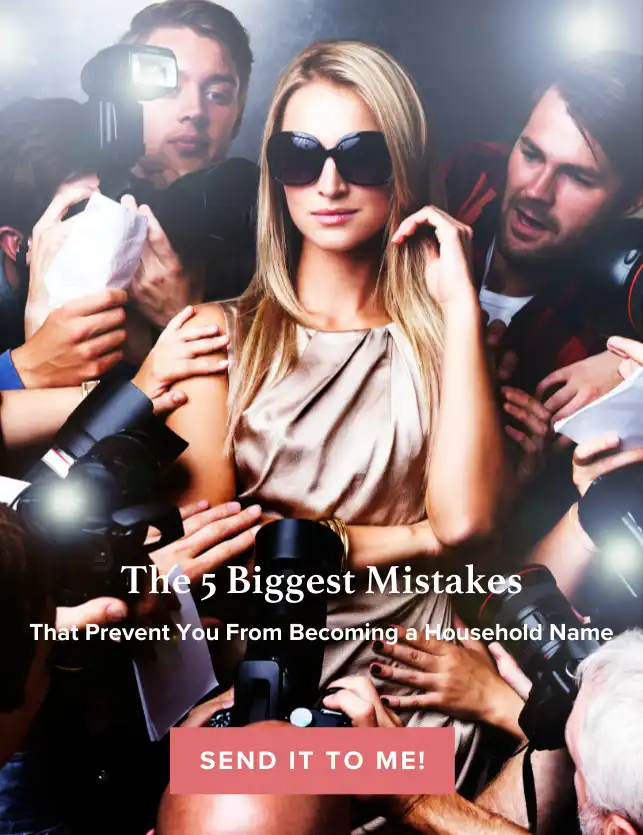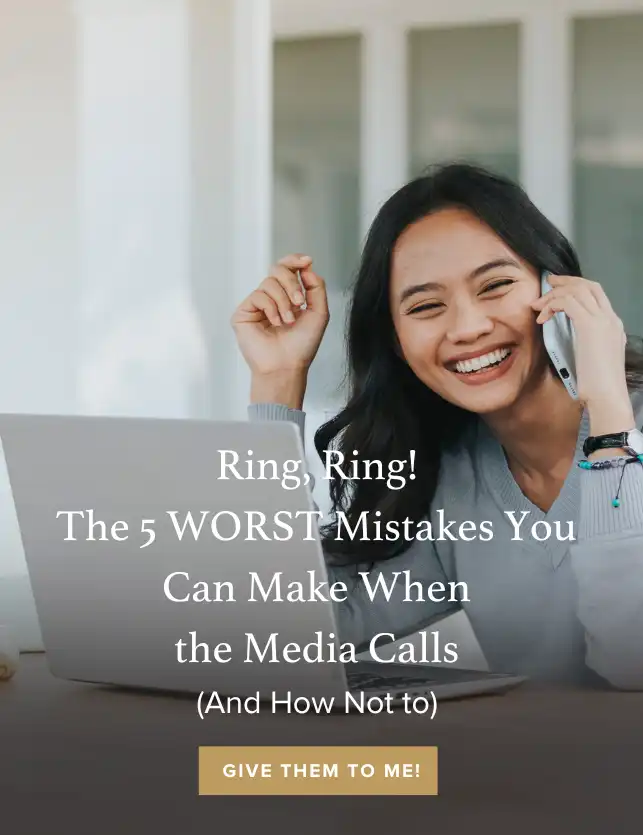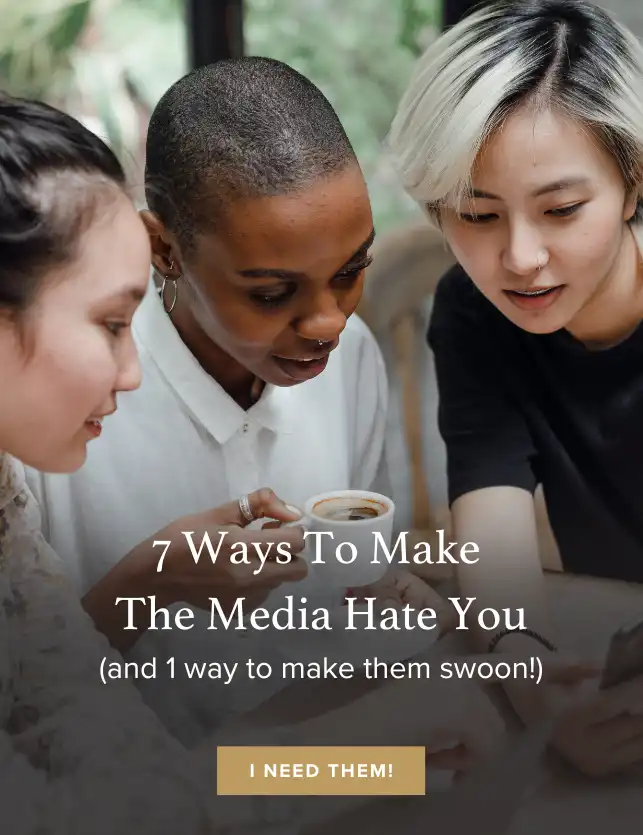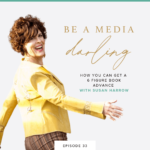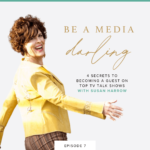What is Media Training: Why it’s Essential in 2025
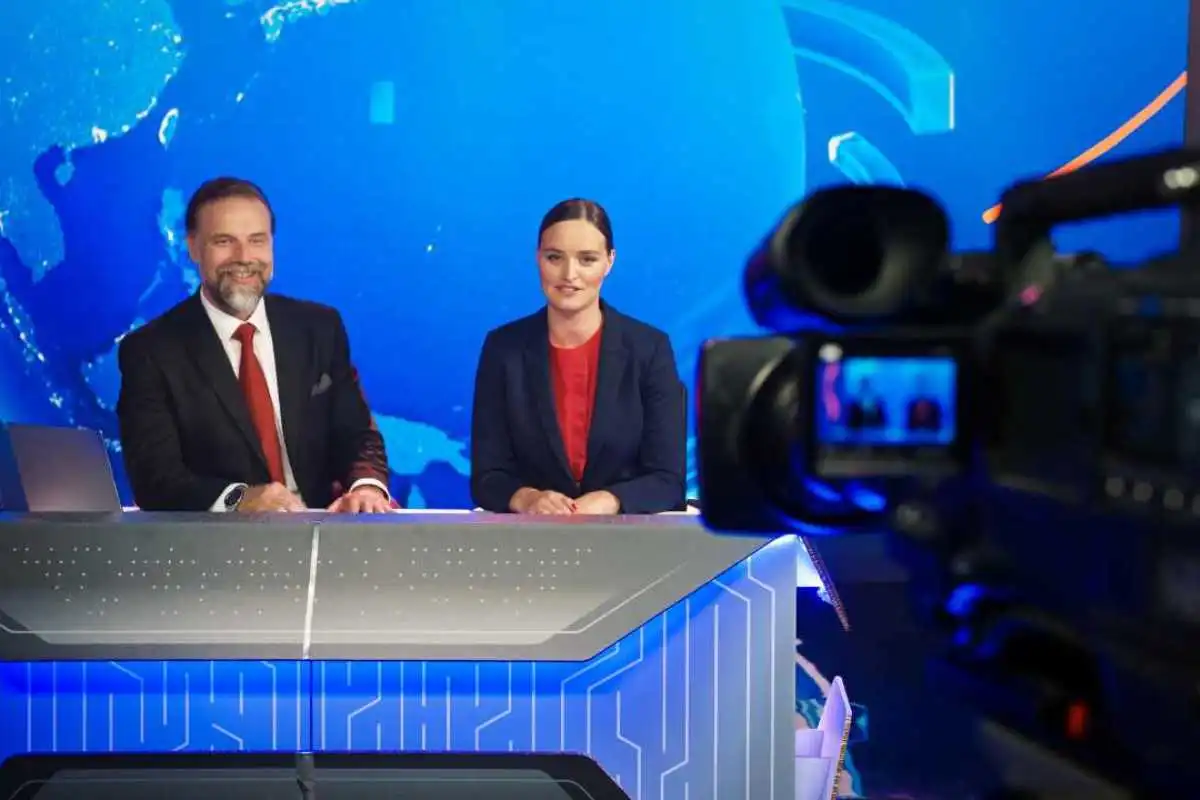
SUMMARY: Media training transforms individuals like Marty from fearing media appearances to confident spokespersons. It equips them with essential communication skills across platforms through crafting key messages, understanding media landscapes, and practicing mock interviews. By mastering storytelling and through continuous learning, anyone can become a confident and effective media spokesperson, navigating the dynamic media landscape with authenticity and impact.
- What is Media Training and Why Does Every Entrepreneur, Founder + CEO Need it?
- What is Media Training Exactly?
- Why Media Training is Essential to Be Yourself.
- The Importance of Media Training.
- What is Media Training – Understanding the Media Landscape.
- What is Media Training – Crafting Your Key Messages.
- What is Media Training – Identifying Your Ideal Audience.
- What is Media Training – Dealing with Difficult Questions and Challenging Situations.
- Evaluating and Improving Your Media Training.
- Preparing for Media Interviews.
- What is Media Training – Practice, Practice, Practice: Role-Playing and Mock Media Interviews.
- Common Misconceptions About Media Training.
- Finding the Right Media Training Program or Coach.
- Taking Your Media Training to the Next Level: Developing Strong Interview Skills With Advanced Techniques and Strategies.
- Conclusion: Becoming a Confident and Effective Media Spokesperson.
What is Media Training and Why Does Every Entrepreneur, Founder + CEO Need it?
What is media training? Here is a quick story.
Marty, a financial services VP at a 132 billion-dollar company had low self-confidence and was terrified to be on TV. The publicist for his firm booked one media appearance. He said if Marty didn’t perform well he wouldn’t schedule any more. He had just this one chance to make it. We worked together, honing his key messages, learning to relax and be present. In addition, we used role-playing so he had a sense of the timing and repartee. He passed the producer’s audition and was green-lit for his media appearance. We planned, prepared and practiced so he could be free to be spontaneous and enjoy himself. He was an informative and lively guest.
The publicist continued booking him for media interviews. He got so accomplished he became a spokesperson for his company, was tapped on national TV to comment on breaking news topics and trends and completely filled his roster with high net-worth clients. We worked together for several years to develop his thought leadership to become a regular commentator and master panels and presentations. Media training is not only a door to develop communication skills. Rather, it helps you grow personally and professionally in all areas of life.
What is Media Training Exactly?
Media training is a structured and purposeful approach to equipping founders, CEOs, entrepreneurs, executives, authors and speakers with the essential skills needed to communicate effectively across multiple media platforms. It encompasses a diverse range of processes, techniques and strategies to prepare clients to navigate the complexities of podcast and media interviews, public appearances, panels, presentations, TED, and social LIVES.
This training is designed to cultivate the ability to articulate messages clearly, concisely and animatedly, maintain self-control during interviews, and shape the themes and narratives that align the business and brand with personal or organizational objectives.
Media training is not solely about facing a camera, video, microphone, phone or in-person media interview. It’s a comprehensive methodology that empowers people who seek greater visibility in the world to master the art of communication, ensuring their messages are delivered coherently, authentically, and with impact, to control how they are perceived by their intended audience while driving business, enhancing credibility and increasing ROI.
Why Media Training is Essential to Be Yourself.
One of my dear friends has a crooked finger. She doesn’t try to hide it. It’s part of what makes her original.
Define your brand by being a crooked finger.
Give advice that only you can give. Your voice, your style, your experience, your knowledge. Too much of what passes for information in books, social media and in media appearances is generic.
Stand out and mark your brand with specific, professional, personal, and profitable advice.
The Grammy Award-winning musician John Batiste said it best. “I’m getting better at telling the truth of who I am and making it something that most people can understand. It’s accessible it’s translatable. And that’s the goal right? It’s not about popularity. It’s about tapping into something that’s in the soul of human mankind that is universal. That makes people feel like they’re not alone. So if I can do that, boom, it’s a win.”
From 35 years of publicity and media training experience, I’ve found that most people’s biggest fear is that they can’t be themselves. There is so much pressure to be other than what we are. During media training, we look for what is unique, quirky, and endearing about you. And develop that so your personal and professional brand are in alignment with who you are and what you do.
Media training is pivotal as it equips entrepreneurs, founders and CEOs with the necessary skills to navigate the complexities of the media landscape effectively—no matter the personality of the interviewer or the unexpected situation. It ensures that your message remains consistent, coherent, and aligned with your objectives across various platforms—while being yourself. I subscribe to the wisdom of Oscar Wilde who said, “Be yourself. Everyone else is already taken.”
The Importance of Media Training.

With media training, clients can convey their points clearly, engage audiences effectively, and avoid communication pitfalls—which happen often. One mistake captured on camera can ruin a reputation in seconds. Media coaching enables you to build credibility, manage crises, and shape public perceptions, building trust, and consequently safeguarding your reputation. Understanding the significance of media training is recognizing that effective communication is a core asset in any field, driving success, growth, and positive public perception.
A recent study shows women were quoted in just 33 percent of U.S. media coverage during the last six months which shows that women leaders can benefit greatly from media training to become more active voices in the national spotlight.
What is Media Training – Understanding the Media Landscape.
The media landscape is diverse and constantly evolving. Given the damning confines of political correctness, it’s easy to be misunderstood. Traditional outlets include newspapers, television, and radio, along with digital platforms like social media, podcasts, and online publications can present unique landmines that require subtle navigation.
Each platform has its distinct audience, style, and norms, requiring tailored communication strategies. Being familiar with a host’s style and the format and timing of the show is a necessary part of being successful. Knowing the reporter or bloggers’ “beat,” the topics they consistently write about, and the angle they take also figures in.
If you don’t hear the clickety-clack of a reporter taking notes you’re not getting quoted. Unless you say something succinctly, surprisingly or uniquely reporters will often use your knowledge as background information without quoting you directly. The goal in print or online interviews is to have as many direct quotes as possible to position you as an ask-you-back authority.
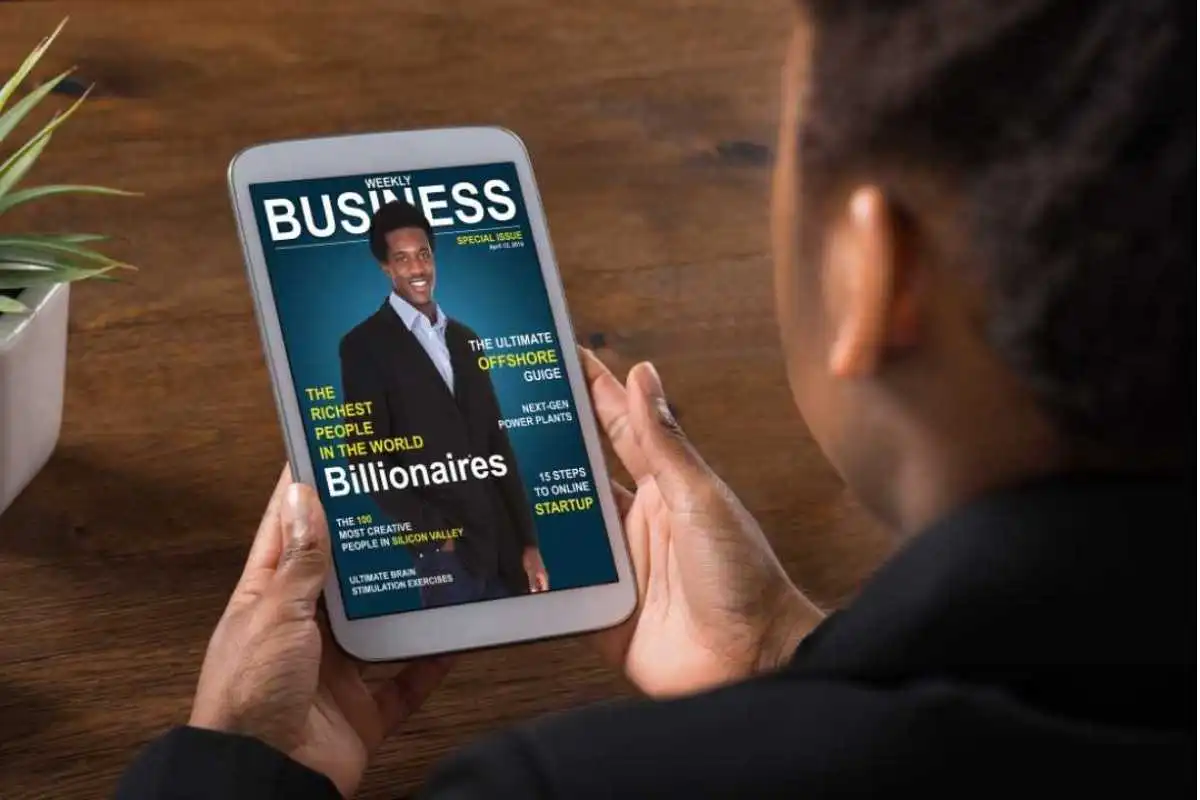
Understanding these nuances is crucial for crafting messages that resonate across various mediums and demographics. Being adept at utilizing different media platforms allows for a broader reach and engagement with diverse audiences.
What is Media Training – Crafting Your Key Messages.
Identifying, crafting and refining key messages involves distilling complex ideas into clear, memorable statements that align with your brand or objectives.
It’s like taking War and Peace and turning into Haiku.
These messages serve as the core talking points, ensuring consistency in communication across interviews or public appearances. Creating messages that are succinct, impactful, and easily understood by diverse audiences is a cornerstone of effective communication. They consist of a mix of stories, statistics, facts, anecdotes, analogies, acronyms, aphorisms, advice, and vignettes skillfully woven into the conversation. In other words packaging your knowledge, wisdom, opinions and expertise so they are easily understood and memorable.
During a group media training session with participants who didn’t have any media experience, a man considered a thought leader in his industry who was used to speaking worldwide on his topic for hours at a time and ran a multi-million dollar company, had a near meltdown attempting to encapsulate his message. It’s a huge transition from speaking on stage when you command your material and set the tone for the audience to having mere minutes to say something important.
By the end of the session, we came up with the core stories and statistics that best represented his business and would satisfy and delight any host or journalist. He moved through this difficult patch to feel more grounded and confident in his abilities to deliver his message to his intended audience who could hire his team for long-term contracts.

Often clients bemoan how difficult it is to take complex issues or ideas and whittle them down into short phrases—which can be misunderstood as “dumbing down.” I see it as Zenifying your message into its essence. These messages should encapsulate your mission, values, objectives, and unique selling propositions, forming the foundation of your storytelling and communication strategy. I agree with Albert Einstein who said, Everything should be as simple as it is, but not simpler.”
What is Media Training – Identifying Your Ideal Audience.
Identifying the ideal audience involves in-depth research into demographics, preferences, and behaviors. Understanding their needs and interests is pivotal in tailoring communication strategies that resonate with the audience. Creating buyer personas or audience profiles helps in visualizing and understanding the characteristics and motivations of the right-fit audience. This knowledge guides the development of messaging and content that addresses the specific concerns, needs and desires of the intended demographic, ensuring the communication is relevant and engaging. That said, many of my clients have a number of vertical markets. We create a messaging strategy for each vertical to ensure that it lands.

For example, I was media coaching a CEO of an up-and-coming company positioning themselves to go public. They were targeting business shows on MSN, CBS, and CNN and wanted to attract investors. We created soundbites to include facts about their financial well-being, the internal health of the company and employee happiness, and the ways that they were innovators in their field. Plus they were growing fast, adding new stores nationwide at record speed while staying in the black.
We took those same stories and angled them for their other two audiences—consumers and trade. And we worked his passion for fly-fishing into the mix, which brought out his sweetness.
When you speak to what your audience needs now, addressing their pain, ambition or aspirations they rush to connect, hire or buy from you.
What is Media Training – Dealing with Difficult Questions and Challenging Situations.

Media training equips individuals with strategies to handle tough questions or unexpected challenges during interviews. Techniques involve redirecting the conversation, bridging to key messages, and maintaining composure under pressure. Being prepared for challenging situations helps steer the conversation back to the intended message without appearing evasive or confrontational. It’s crucial to address difficult questions honestly, tactfully, and in a way that aligns with the overall communication strategy.
My client had already run a successful 80-million dollar tech company so she had instant credibility. She was a proven “commodity.” Yet, when she pitched her next company idea to a group of potential male investors who asked her inappropriate and insulting questions, she found herself triggered and angry, blushing, and stumbling over her words.
One man asked her how old she was. Another put his feet up on the table in front of her. A third scanned her body slowly top to bottom.

By the end of our media training, she had the tools to gracefully handle any behaviors or questions that were disrespectful or demeaning—without turning red, snarking back or losing her cool.
When faced with challenging questions of any sort, it’s crucial to respond with honesty, brevity, and a redirection to key messages. Acknowledging (or ignoring when necessary) the question and tactfully steering the conversation back to the intended message is essential. This approach helps maintain control and credibility while avoiding potential distractions or misinterpretation of the intended message.
I was talking to one of my clients who is a psychiatrist specializing in shifting depression and anxiety in adolescents. She gives the assignment to her patients to face their fears little by little.
How?
Exposure therapy.
Which is simply to take the minuscule step to do the thing you’re afraid of. “Expose” yourself to the thing that scares you.
By practicing the experience over and over again the gut sinking, sweating, hyperventilating, and aversion to it lessen bit by bit.
It’s the same when you prepare for media appearances.
We go through the role-play as if it were real so you can see where the stuck spots, triggers and fear points are so you can move through them.
When you do the hard things they become easier over time.
Evaluating and Improving Your Media Training.
One of my clients, the founder of a tech company that was acquired for 60 million, was appalled when she first saw herself on video. We were preparing for a four-minute spot on a national TV show. When we replayed the video role-play where I acted the personality of the host who was going to interview her, she began shouting, “Who does she think she is!?” “Who would take her seriously?” “Oh my God just look at her fat face etc.” It can be shocking to first see how you show up on camera or Zoom.
Clients tell me how they hate their voices, and the way they look, and they insult their personalities and doubt their knowledge and expertise. That is part of the normalization of the media training process which can shift in short order.
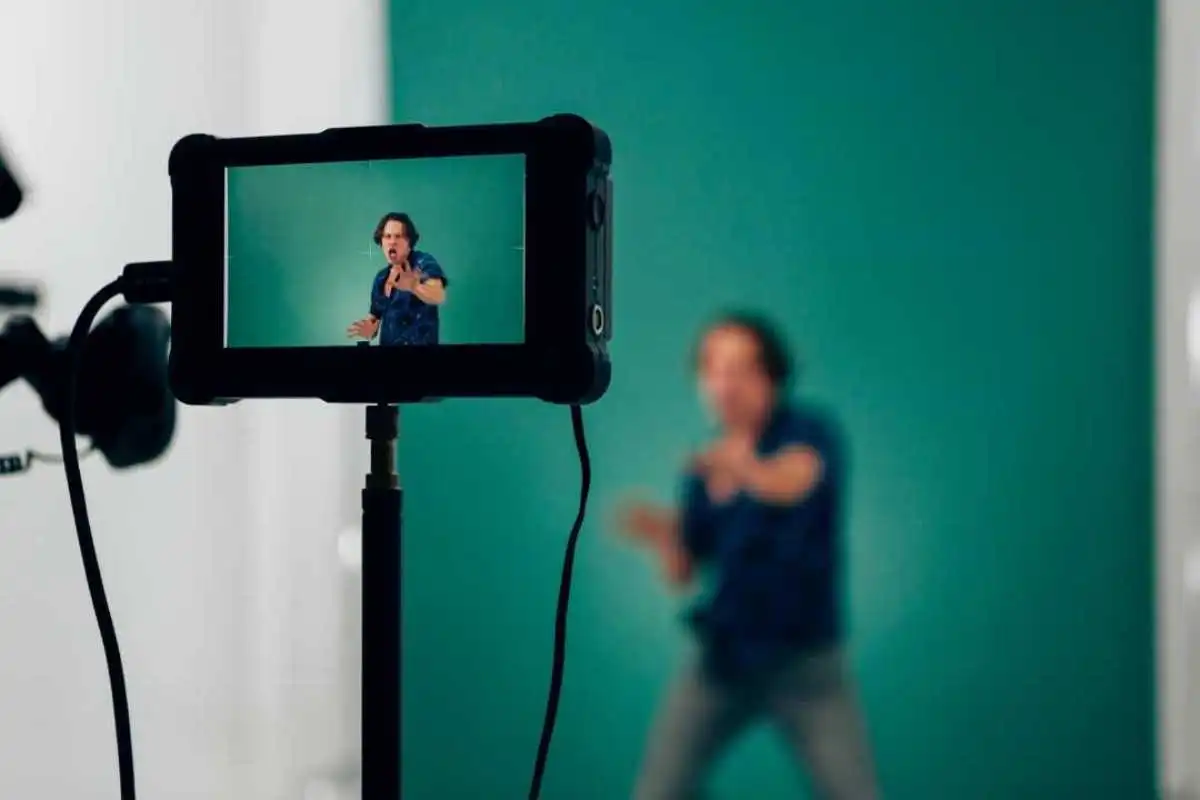
Continuous evaluation of media training techniques is vital for sustained growth. By reviewing past interviews, soliciting feedback, and assessing performance, individuals can pinpoint strengths and areas needing improvement. This ongoing process aids in refining communication strategies and ensuring consistent improvement in media interview skills.
After every interview, we review what went well and what clients want to keep and what they would shift for next time. Then we role-play how they wished they would have responded so it gets ingrained in their mental and muscle memory.
Preparing for Media Interviews.
Preparation for media interviews involves several key steps: researching the interviewer or publication, understanding their style and audience, anticipating potential questions, and drafting key messages. Thorough preparation allows individuals to remain focused and confident during interviews, ensuring the delivery of key points effectively. Practicing potential responses to expected questions helps in refining messaging and delivery, reducing the likelihood of being caught off guard. Additionally, preparing relevant anecdotes or examples that support your key messages can enhance the clarity and relatability of your responses.
I just got off the phone with a potential client who has been putting off doing a podcast with over a million subscribers.
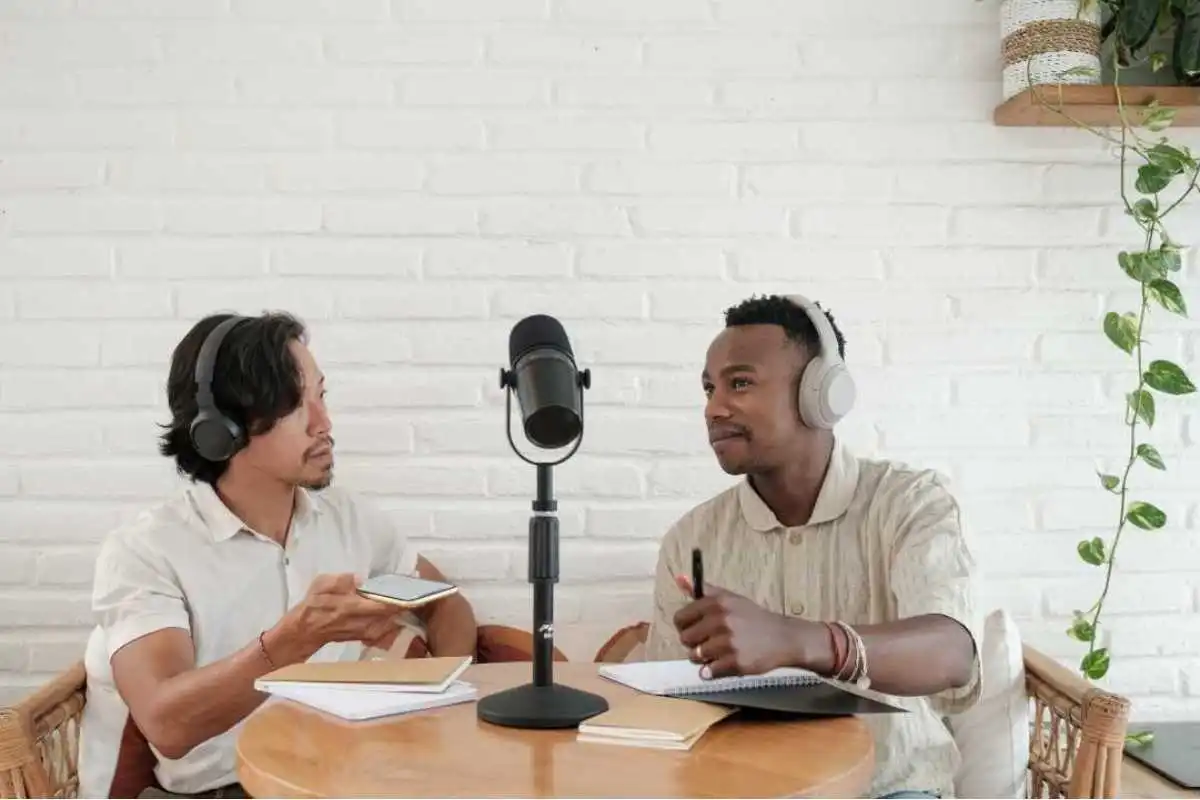
It’s the perfect podcast for her and they’ve been inviting her for years but she kept postponing the interview.
Someone told her that when she did that show she’d better plan on taking 2 days off to recoup from the tsunami of responses from the avid audience.
This scared her on 3 levels.
1. She isn’t prepared with messaging and worried that the show would just turn into a monologue all about her—which made her balk.
2. She had no way to get people onto a list so she would miss the opportunity to gain thousands of subscribers—future potential partners for her business.
3. She was shaking in her boots that she’d be inundated with people who just wanted information from her – newbies that “wanted a piece of her” since she’s an expert in her field.
She’s right to be scared.
Without these things in place, it could be a disaster:
1. Key messages.
2. A system to capture and nurture leads for current and future sales/partnerships.
3. An intentional strategic verbal blueprint to attract the right clients, customers, connections, and partners to her for what she wants—so she doesn’t waste time with looky-loos.
But wait!
We also discussed the best-case scenario. If she just got ONE SINGLE right connection from that podcast that would mean at least a million dollars in revenue in her pocket.
Given the odds and the audience, this was not a pipe dream.
Preparing well for media interviews will head off heartache, jitters, and scrambles and get set to feel a sigh of relief, enjoy the thrill of connecting with THE ONE RIGHT person… and possibly enjoy dozens of the right partnerships, alliances, seed-to-series C funding, or to bask in lucrative contracts, speaking engagements, or sales.

What is Media Training – Practice, Practice, Practice: Role-Playing and Mock Media Interviews.
Role-playing and mock interviews provide realistic simulations of actual interview scenarios. This practice helps in familiarizing individuals with diverse interview formats, allowing them to refine responses and test various communication approaches. The simulated environment creates a safe space for individuals to experiment with different techniques and receive constructive feedback. Regular practice ensures readiness and confidence in handling challenging interview situations.
Consistent practice, self-assessment, seeking feedback, and implementing strategies for improvement are vital for maintaining and enhancing media communication proficiency. This continuous process is essential for continual improvement.
Common Misconceptions About Media Training.
Common misconceptions about media training include beliefs that it’s only for high-profile individuals or that it involves the manipulation of information. Addressing these misconceptions is vital to understanding that media training is beneficial for anyone seeking to enhance their communication skills. It’s about crafting authentic, truthful messages aligned with your present and future objectives and effectively conveying them to the audience.
Not surprisingly, 1 in 5 business leaders claim to have experienced a loss of credibility due to poor communication. 68% of business leaders who lost deals due to miscommunication claim that it has cost them $10k or more, and 13% of them estimate that lost deals have cost them $50k or more.
Finding the Right Media Training Program or Coach.
Selecting a suitable media training program or PR coach involves assessing their expertise, approach, and ability to customize training to individual needs. An effective program provides personalized guidance, constructive feedback, and techniques that align with the individual’s communication style and goals. Researching and comparing various programs or coaches aids in finding the right fit to maximize the benefits of the training.
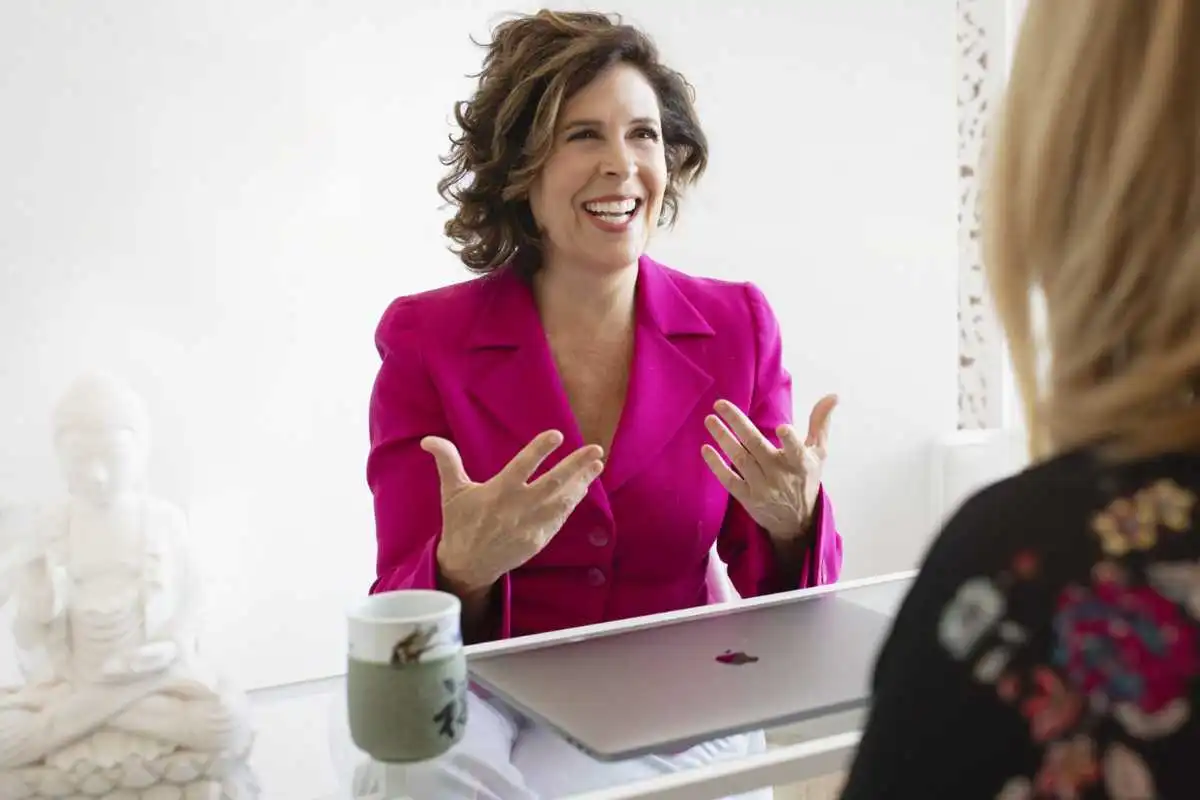
I rarely participate in sending in proposals or RFPs before a decision to work together is finalized. Most of my clients know whether I’m a good fit for them after one or a few conversations. The proposal then just maps out what we’ve determined the outcomes we want and the pathway to get there. If they aren’t convinced we’re a match after our meetings and reading my dozens of case studies and testimonials then we aren’t right for each other. It’s essential that both parties are mutually invested in the desired results. And that the communication styles, personalities, and time-frames for accomplishing goals are a sympatico match.
For most of my clients the decision is more about how long will the media training last. We come up with the best customized program that suits their style, energy, schedule, and learning capacity. All my agreements are open ended and no one has ever canceled due to dissatisfaction. In fact many extend their agreements well beyond our original time frame.
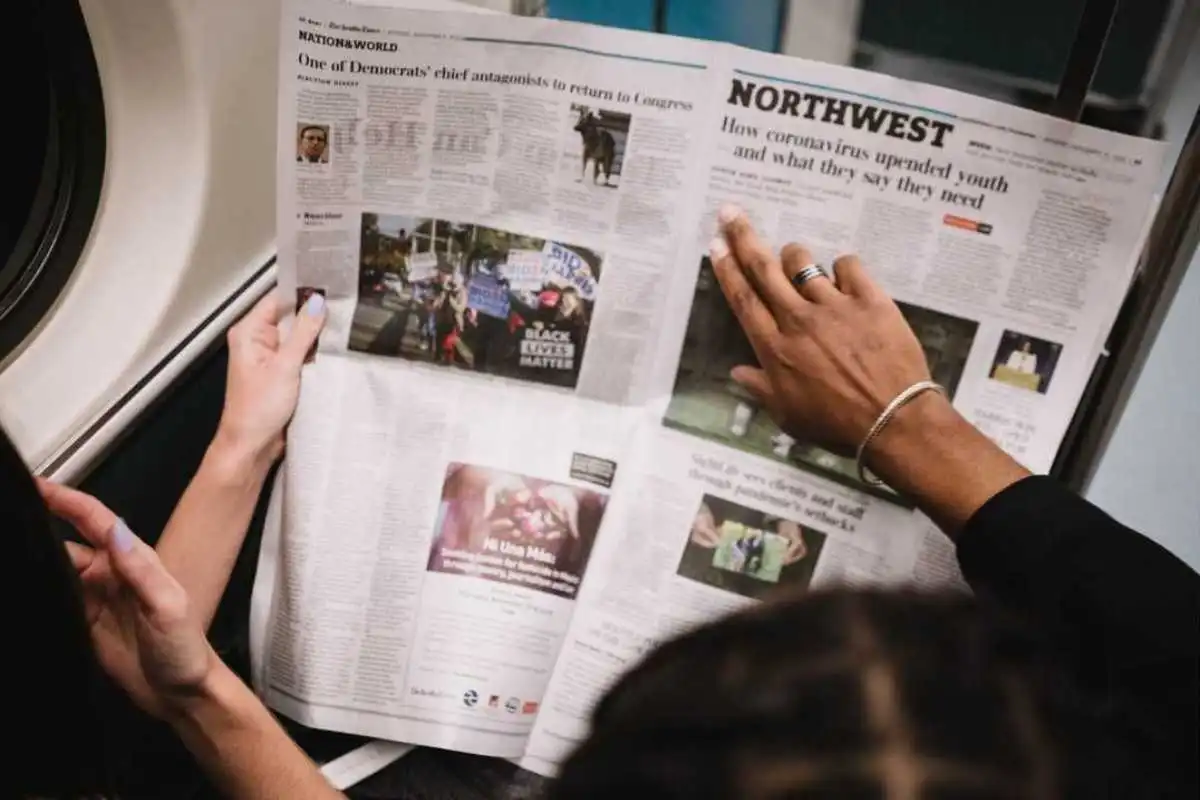
Taking Your Media Training to the Next Level: Developing Strong Interview Skills With Advanced Techniques and Strategies.
Speak so you can’t be edited.
I media coached a former Jesuit priest for CBS’ 60 Minutes who was protesting the sexual harassment he had endured that led him to leave the priesthood. The show was called “Is the Catholic Church above the law?” I played Mike Wallace. Morley Safer interviewed him instead. He said the interview was easy after what I put him through.

He was positioned positively. It could easily have gone the other way—except for one thing. When I taught him to only speak phrases that couldn’t be truncated and spliced to change his meaning the six hours of taping that was edited down to five minutes turned in his favor.
Does this take lots of practice? Yes. But it can be done.
Moving beyond the basics involves mastering storytelling techniques, complex interview formats, crisis communication, and adeptly handling various media platforms. Employing advanced strategies elevates an individual’s media presence and impact.
Strong interview skills encompass ongoing preparation, active listening, concise message delivery, and adaptability to diverse interview formats and personality types in advance and in the moment. Developing these skills ensures a more impactful and engaging interview presence.
I love poetry and nuance and subtlety. It saddens me that the place for it in the media is almost as extinct as the White Rhino. Learning to speak “soundbite” is like learning a new language. And I hope I’ve shown you the ways to do that without selling your soul.
Conclusion: Becoming a Confident and Effective Media Spokesperson.
Whether you’re an athlete, a celebrity, or an entrepreneur, founder, author, speaker or leader, becoming a confident and effective media spokesperson requires dedication, continuous practice, and a commitment to honing communication skills. By mastering the art of storytelling, preparing meticulously for interviews, and continuously refining skills through practice and feedback, individuals can navigate the dynamic media landscape with confidence and authenticity, effectively delivering messages that resonate with audiences.
Continuing education in media training involves attending workshops, seminars, advanced training sessions, or one-to-one media coaching. On Zoom or in a room with a group, people learn exponentially.
I remember media training a group of stock analysts all over the world via Zoom. It was super fast-paced and they each had a different “beat” so their content was vastly different. What wasn’t different was how to frame their information, create a theme, points, stories, and examples, and deliver it succinctly and memorably.
They were quick to pick up the “mistakes” or awkward moments from each other. No one repeated any of them once I pointed out what could be changed on the spot. Consistent practice and staying updated with the latest communication trends and technological advancements are pivotal for sustained growth. Engaging in continuous learning ensures that any public-facing figure remains relevant and adapts to the evolving media landscape
Mastering the intricacies of media training is an ongoing journey, leading to more effective and impactful communication for both individuals and businesses.
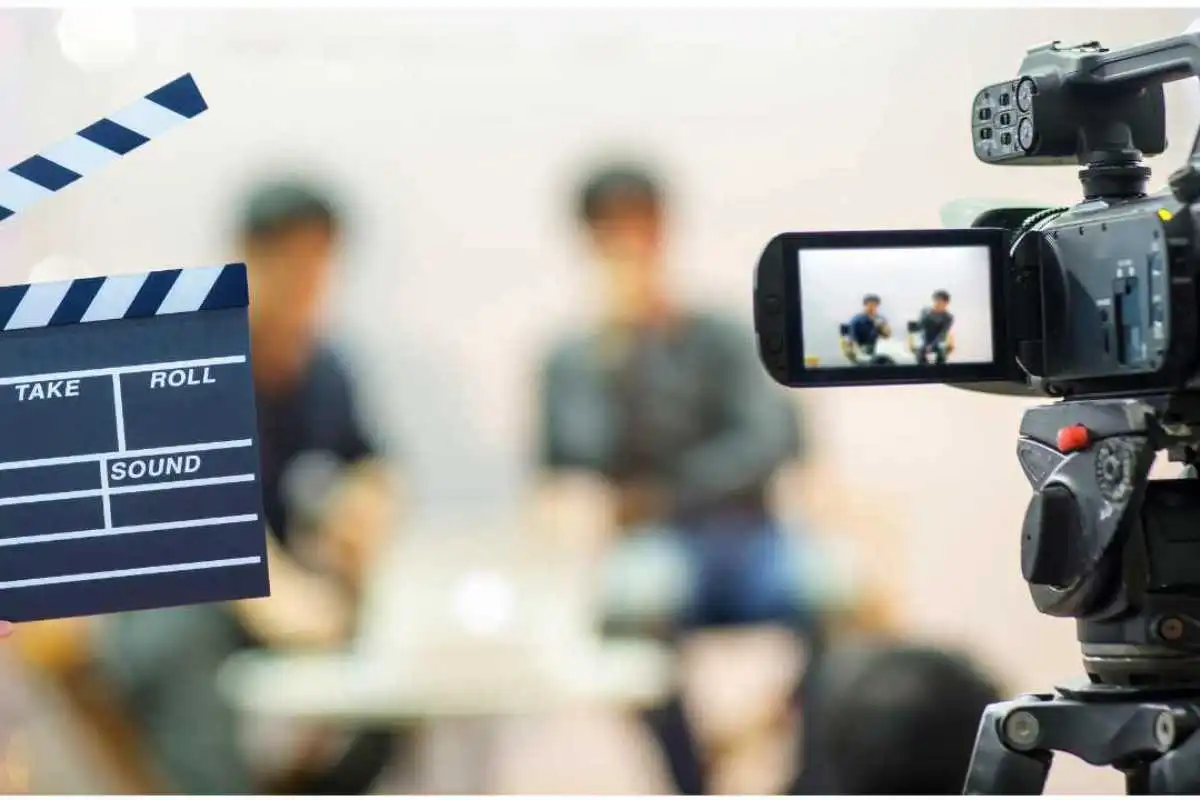
Check out our PR and Media Training Workshop to Jumpstart your Publicity
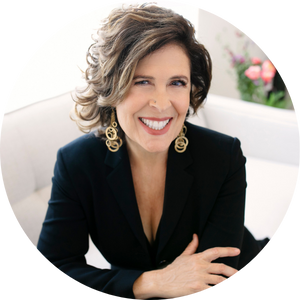
Like what you read? Share it!
Disclosure: Some of the above may be affiliate links that I will be compensated for at no cost to you. They are products or services I’ve either used, vetted or trust. Enjoy!
WE THOUGHT YOU’D ALSO LIKE THESE POSTS








